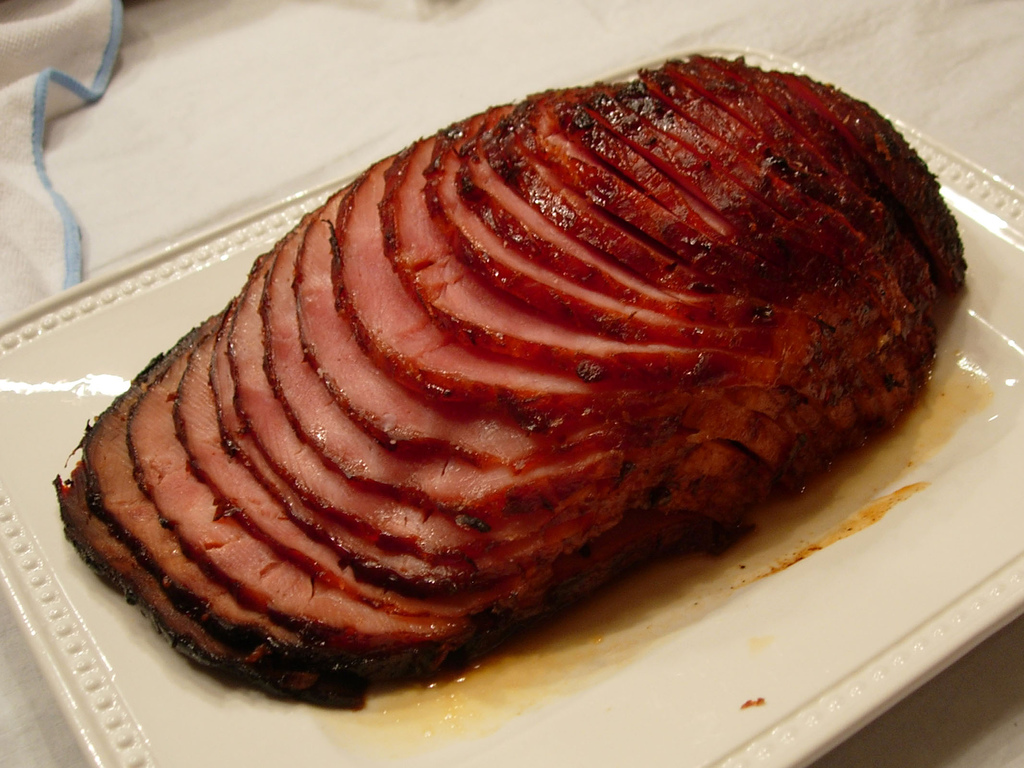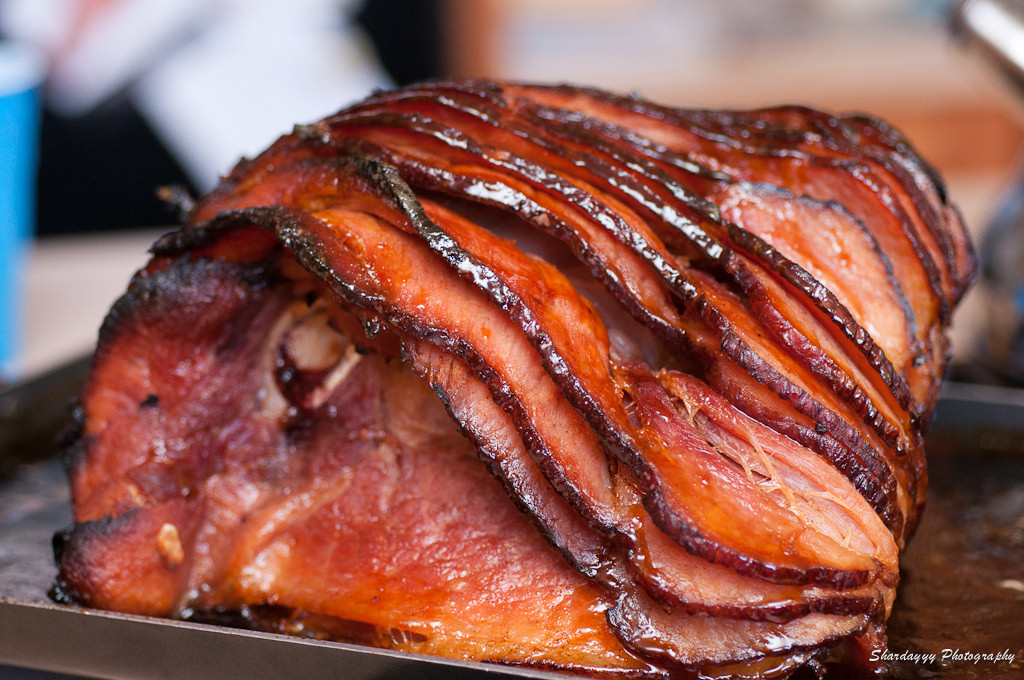How to Pick a Scrumptious Holiday Ham

My family that I grew up in wasn’t too big on ham. I don’t ever remember having a big ham for the holidays. Occasionally, my mom would buy a small turkey “ham” and we would eat that for a week night meal. It wasn’t until college that I experienced my first, real Honey-Baked Ham. My roommate and best friend, Heidi, decided to have a Christmas dinner at our tiny apartment one year. She bought a Honey-Baked Ham and invited many of our friends to eat with us. The people who came contributed side dishes to the meal. I don’t think we ever had so many people squished into our little apartment. It was a wonderful meal, and I will never forget how delicious that ham was.
I am usually not willing to fork out the money for a true, name brand Honey-Baked Ham, but I do often buy a grocery store ham for my little family during the holidays. How do you pick a great ham? Here are a few things to consider.
- City vs. Country Hams- Most of the hams sold in US grocery stores are city hams. City hams are made by brining a pork leg or injecting the leg with a salt solution. Country hams are cured with a dry rub and then hung to dry. Country hams have an intense saltiness taste and will a drier texture. Most people prefer city hams, but whichever you choose, make sure you carefully read the label so you will know how to properly prepare it.
- How Big of a Ham to Buy - Once you know how many people will be eating the ham, plan on about 8 to 12 ounces of meat per person for bone-in hams. For boneless hams, you should buy 6 to 8 ounces of meat per person.
- Bone-In or Boneless – Bone-In hams generally have a better flavor and as an added bonus you can use the ham bone later for soup. One disadvantage to bone-in hams is that you have to cut around the bone, which takes longer, and the presentation probably won’t look as nice when you are through.
- Water Content – It is important to check the ham’s label to see how much, if any, water has been added to the ham. The less water, the more ham. Hams with little or no water are generally preferred. Especially avoid hams that say “Ham and Water Product” because they can contain up to 35 percent water.
- Spiral Cut or Not – Most “ham experts” think you should skip the spiral cut hams. Yes, a pre-cut ham is very convenient, but they dry out quickly when heated in the oven.
- Appearance – Hams should be a bright pink color. Hams that look greenish or appear multi-colored should be avoided due to likely presence of bacterial growth. Unlike beef roasts, it is best to avoid hams with too much fat marbling. Hams with a lot of fat will be too greasy.
I hope that helps you pick out your ham this holiday season! As you know, ham tastes wonderful just warmed in the oven, but it can also be fun to get creative and dress up your ham for the holidays. You can glaze your ham with honey, maple syrup, or brown sugar. Many people like to put fruit preserves on their ham like pineapple, red currant, or apricot jelly. Some people enjoy dressing their ham with glazes made from soda pop like Cherry Coke or Root beer.

However you do your ham this holiday season, I hope you enjoy it! Have a wonderful holiday season!
- https://www.thekitchn.com/a-complete-guide-to-buying-holiday-ham-guides-from-the-kitchn-213606
- https://www.seriouseats.com/2010/12/the-food-lab-how-to-pick-and-cook-a-holiday-h.html
- https://www.preparedpantry.com/blog/selecting-baking-holiday-ham/
- https://www.seriouseats.com/2014/12/the-food-lab-definitive-guide-to-ham-holiday.html
 Cristina Duke
Cristina Duke
Monthly Newsletter Contributor since 2014
Email the author! cristina@dvo.com
